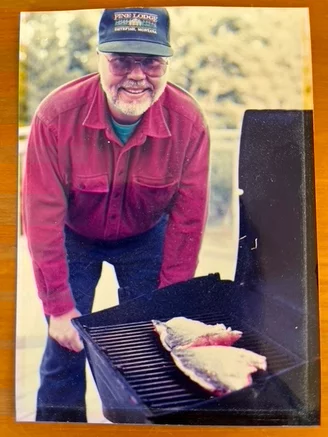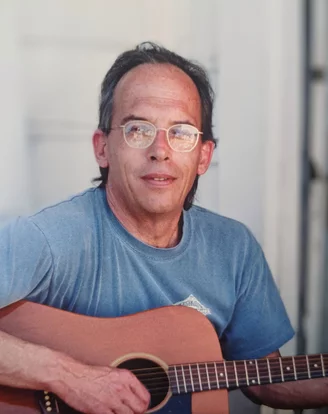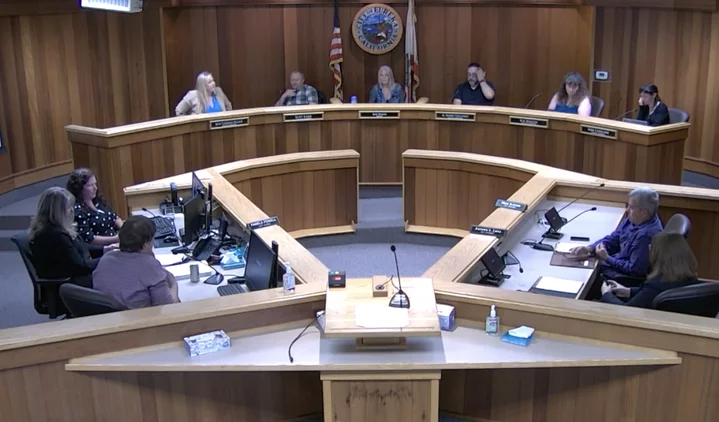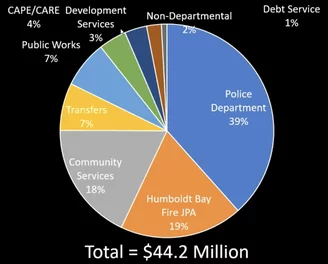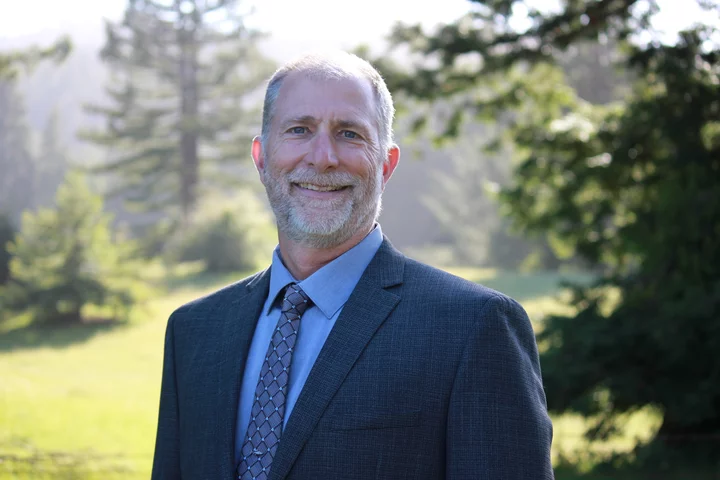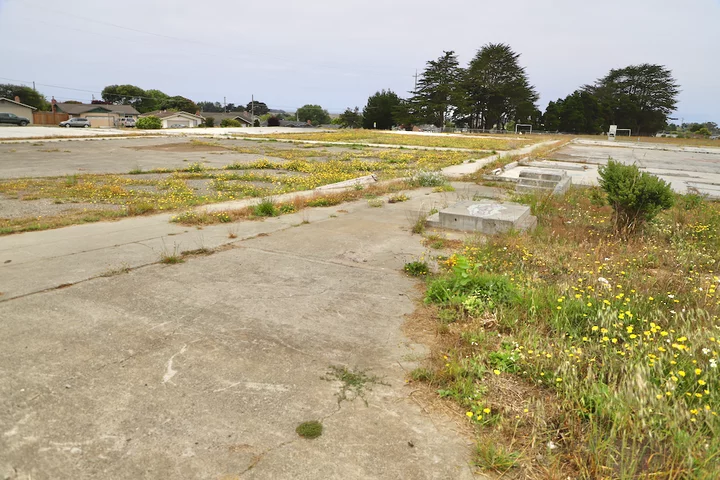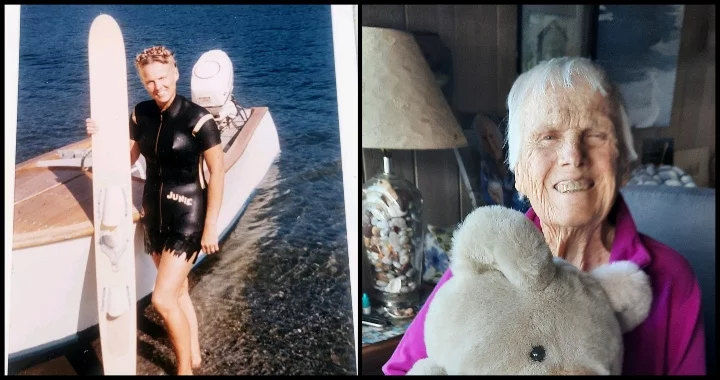OBITUARY: Donald Alan Nielsen, 1940-2024
LoCO Staff / Thursday, June 13, 2024 @ 6:56 a.m. / Obits
Donald
Alan Nielsen, 84, the grandson of Swedish and Danish immigrants who
settled on the Arcata Bottom in the early 1900s, passed away the
first week of April following complications from a fall.
From an early age, Don worked on the farmers’ and ranchers’ fields on the Bottom weeding, mowing, and baling hay, and later worked as a night watchman at the Simpson Mill to support his family and to earn his college expenses.
Don attended the College Elementary School and Arcata High School, where he was active in debate, a delegate to Boys State, and graduated with honors in 1957. As a promising undergraduate at Humboldt State College, Don taught mathematics at College of the Redwoods and worked part-time as a sports writer on The Humboldt Standard newspaper in Eureka. At HSU, he was a staff writer on the Lumberjack and the Sempervirens annual. After completing his Bachelor of Science in math at HSU, he was awarded a graduate fellowship at Washington State University, Pullman.
Midway through his Fellowship, during a Christmas trip to Arcata, Don and his wife Jeanette and young son Randy were marooned in Arcata during the “thousand-year flood” of 1964. Unable to return to his teaching at WSU, Don completed his Master’s in mathematics at HSU, and also earned a lifetime teaching credential. After a year teaching math in Yreka, Don accepted a position to teach accelerated mathematics in the Northern Humboldt Unified High School District, which included 28 years at McKinleyville High School and five years at his alma mater, Arcata High School, retiring in 1999.
Don was a very private and modest man, but to the kids who knew him on the field and in the classroom he rocked. Don’s collection of yearbooks reflected tales of hard-won subject mastery, and stories about his exuberant teaching style spent in a classroom where the chalkboard was crowded with mathematical formulae. Students thanked him for his patience, kindness and good humor. In retirement, he was often stopped on the Plaza or elsewhere in the community by a former student who queried, “…Remember me, Mr. Nielsen?” followed by a snapshot of a special moment from high school days.
In addition to umpiring the Humboldt Crabs games, Don coached McKinleyville boys’ and girls’ basketball teams, and coached the 1988 Girls’ Softball Team to the North Coast and the Humboldt-Del Norte Championship. In 2008, Don was inducted into the McKinleyville Hall of Fame, and the honoree at its Homecoming festivities and parade.
From an early age, Don was an enthusiastic outdoorsman, having learned to fish and hunt from his dad, skills he passed along to young people during backpacking adventures into the Marble Mountains and Wilderness Alps. He was also a Master Gardener who shared his gardening skills with numerous HSU students, whose lives were enriched by learning how to produce their own food.
As a member of the Sierra Club, Friends of the Dunes, and the international travel organization Servas, Don lived the life of a conservationist and preservationist locally and abroad through travel and service. Though he did not see himself as an activist, he readily supported several efforts in the mid-‘80s to preserve his own and nearby agricultural properties on the Arcata Bottom from further development and exploitation. He was also an enthusiastic explorer with his wife of 35 years, Carol, in Italy, France, England, and in Alaska, the Pacific Northwest, and the Southwest.
Predeceased by his parents Anders and Anna Carlson Nielsen, his brother Curtis, and aunt and uncle Herbert and Erminia “Snookey” Carlson, Don leaves his spouse Carol Kirkby McFarland, Arcata; son Randy (Sharmini) Nielsen, of McKinleyville; grandchildren Melynda (Joey) Blake of McKinleyville, Kyle (Lily) of Fortuna; cousins Gary (Cathy) Carlson of Simi Valley, and David (Judy Tsou) of Seattle, WA, nephew Curtis (Melissa) Nielsen of Shelton, WA; and his lifelong friend Archie (Vivian) Day. And with special thanks to the Barnwell family, whose Chalk Mountain Ranch at Bridgeville hosted years of hunting trips; and to Tim and Sherry Klassan for their Reel Steel sport fishing voyages.
Don specified no services, but thought planting a garden, a walk in the wilderness, contributing to a civic effort and supporting education were good things.
###
The obituary above was submitted on behalf of Don Nielsen’s loved ones. The Lost Coast Outpost runs obituaries of Humboldt County residents at no charge. See guidelines here.
BOOKED
Yesterday: 8 felonies, 6 misdemeanors, 0 infractions
JUDGED
Humboldt County Superior Court Calendar: Friday, Jan. 2
CHP REPORTS
No current incidents
ELSEWHERE
RHBB: Driver Trapped After Seizure Reportedly Leads to Crash at Fourth and I Streets in Eureka
Mad River Union: APD: Arcata declares State of Emergency
OBITUARY: John Wesley Yagotin, 1951-2024
LoCO Staff / Thursday, June 13, 2024 @ 6:56 a.m. / Obits
John Wesley
Yagotin of Eureka passed away, with loved ones at his side, on
Friday, April 19, 2024, at Eureka’s Providence St. Joseph’s
Hospital, following a brief illness. He was 72.
John was first-born to Philip and Connie Yagotin of San Francisco. John enjoyed many adventures as a young boy in the Bay Area suburbs in the 1950s and ‘60s. Summer was never long enough for John as he spent his time exploring and hiking in the nearby parks and beaches, where he developed a life-long love of the outdoors. John’s appreciation of the beauty and tranquility of nature led him to call Humboldt County his home for over 40 years.
He was a man of many talents and interests, excelling in various fields and always eager to learn something new. His curiosity and passion drove him to explore different subjects, from international cooking and music, to science, religion and classic literature. John felt most at home in the great outdoors and often said that standing surrounded by the towering redwoods was to him, standing nearer to the Creator. He was a true outdoor enthusiast, and a family camping legend who brightened every adventure with his cleverness and practicality. He enjoyed playing the guitar, both acoustic and electric, and more recently began playing the ukulele. John was active and fit well in to his 70s, and took enjoyment in riding his bike across town to and from work, as the weather permitted.
Over the past 50 years John had a varied career path that spanned the newspaper industry, finance and retail. For many years, John had his own computer repair business. Most recently he was a part of the dedicated team at Eureka’s Albee & Buck Wholesale Distributors.
John is survived by his loving partner for the past 24 years, Susan Gillespie; his two children of his first marriage, son Jesse Yagotin (Elizabeth) and daughter Jill Adams (Jason); twin daughters from his second marriage, Lauren Parker (Robert) and Amy Mixer (Jason); and step-children Bryan Gillespie (Melissa), Elise Mohr (Jon Paul), and Christiane Adams (Chase). John is also survived by his sister Phyllis Branam of Oregon, and sixteen grandchildren. He was preceded in death by his mother, Constance Reno; step-father Arthur Reno; father, Philip Yagotin; and step-mother, Charlotte Yagotin.
John’s family would like to acknowledge appreciation for the care provided by Dr. Tony Anagnostou, Dr. Dusten Macdonald, and the compassionate medical and administrative team at Providence.
A celebration of life will be held at a later date, at one of the local redwood parks that were so dear to John.
###
The obituary above was submitted on behalf of John Yagotin’s loved ones. The Lost Coast Outpost runs obituaries of Humboldt County residents at no charge. See guidelines here.
YESTERDAY IN EUREKA COUNCIL: Staff Credit Measure H Sales Tax Reveues for Ongoing Financial Stability, Despite $1.1 Million Budget Shortfall
Isabella Vanderheiden / Wednesday, June 12, 2024 @ 3:15 p.m. / Local Government
Screenshot of Tuesday’s Eureka City Council meeting.
###
The Eureka City Council met for a special budget study session on Tuesday evening to review the proposed spending plan for the 2024-25 fiscal year, and to take a closer look at city departments and divisions funded by the General Fund.
The City of Eureka is looking at a $1.1 million budget deficit in the upcoming fiscal year due to “relatively flat” sales tax revenues and rising employee salaries and benefits. At the council’s last meeting budget hearing on June 4, Eureka Finance Director Lane Millar reassured the council that it is not unusual for the General Fund to show a deficit, noting that sales tax goes up and down every year.
“[This] tells us that things are a little bit tighter than they were a couple of years ago,” Millar said at last night’s study session. “On the expenditure side, labor agreements, salaries and benefits are going up almost across the board … and those are hitting the department’s budgets.”
Millar went over the projected expenditures for each department and division that receives funding from the General Fund. The Eureka Police Department is projected to receive $16.9 million from the General Fund, up by about $898,000 from the current fiscal year.
EPD is broken into two divisions: communications and enforcement. Millar noted that the growth rate for enforcement is projected to be “less than average” in the next fiscal year due to a reduction in unfunded liability payments through CalPERS. “Fortunately, we expect that to go down by about $300,000 next fiscal year,” he said. “But unfortunately, it’ll go right back up the following fiscal year.”
The city has also earmarked $8.2 million for Humboldt Bay Fire, $7.9 million for Community Services, $3.1 million for Public Works and $1.8 million for the Community Access Project for Eureka (CAPE) and Crisis Alternative Response Eureka (CARE), the city’s homeless outreach programs. The remaining General Fund allocations are broken down in the pie chart to the right.
Millar’s presentation focused on the benefits of Measure H, a 1.25 percent sales tax approved by voters in 2020. The tax measure has boosted the city’s finances in recent years and is expected to contribute $12.5 million in the upcoming fiscal year, representing roughly 30 percent of the General Fund’s revenues.
“Measure H has significantly changed operations in a very positive way,” Millar said. “It’s made us more financially sound but I think we’re at a point where growth has slowed down, and I believe that we will plateau at this point, in terms of growing staff and operations and incorporating new services.”
Still, the tax measure has allowed the city to expand critical services, including its CAPE and CARE programs, which are partially funded by outside sources.
Eureka City Manager Miles Slattery added that Measure H “has been huge” for the city’s parks.
“We’ve probably increased our staffing in the parks [division] by 30 percent,” Slattery said. “Since Measure H, we’ve got a dedicated maintenance worker in Old Town [and] a dedicated maintenance worker along the Waterfront Trail. … Carson Park wouldn’t have been done without Measure H [and] Highland Park – which will be done by the end of June – wouldn’t have been done without Measure H. It’s been invaluable to our quality of life facilities and programs as well.”
Turning to questions from the city council, Councilmember Leslie Castellano asked Millar to explain why EPD’s unfunded liability payments were predicted to fluctuate in the next few years.
“CalPERS has an investment portfolio, and every year they earn or lose a certain amount of money, but that rate isn’t applied right away,” Millar explained. “[T]here’s typically three years before that change to the portfolio hits our unfunded liability payment. You may remember that what happened during COVID was a huge market correction and then it quickly went back up. … That one year with that large return, essentially, reduced future unfunded liability payments.”
He added that the city could look into pension obligation bonds as a means to fund the unfunded portion of its pension liabilities and prevent fluctuation, but said: “Rates are still too high to consider that option.”
Councilmember G. Mario Fernandez asked if the staff was equipped to handle potential funding cuts at the state level that would affect CAPE and CARE. Millar said both programs will continue to receive grant funding “for at least another year,” but acknowledged that many of the positions within those programs are funded through state grants.
After a bit of additional discussion, the council agreed to accept the report but did not take any formal action on the item.
The city council is expected to finalize the proposed budget at its next meeting on Tuesday, June 18. That agenda can be found here.
Arcata’s New City Manager Is … Fortuna’s Soon-To-Be EX-City Manager! Merritt Perry to Step in For Karen Diemer
LoCO Staff / Wednesday, June 12, 2024 @ 12:10 p.m. / Local Government
Perry. Photo: Submitted.
PREVIOUSLY:
- Karen Diemer, Arcata’s City Manager for Nearly the Last 10 Years, Announces Her Impending Retirement
###
Press release from the City of Arcata:
The City of Arcata is excited to share the selection of Merritt Perry as the next City Manager. With more than 30 years of local work on public projects and 10 years of direct municipal government experience, Mr. Perry brings a wealth of expertise to his new role.
“Merritt comes with a great background and a great track record,” Mayor Meredith Matthews said. “He already has strong relationships in Arcata, graduating from Cal Poly Humboldt’s Engineering Program, working on many Arcata projects including The Humboldt Bay Trail North, and having raised his family in Arcata schools. I couldn’t be happier to know that our new City Manager is one with great experience who already has a genuine appreciation for and connection to our community”.
Perry will take over starting August 19th, the city said.
Regarding his upcoming appointment Mr. Perry said, “I’m very excited to get started in Arcata and am grateful for the City Council’s confidence in my ability to serve as City Manager. Exciting things are happening in Arcata, and I look forward to working with the residents, businesses and staff to build on the momentum underway set through the City Council’s vision for the future”.
Mr. Perry replaces City Manager Karen Diemer, who is set to retire in September after 28 years of service to the City, the past nine as City Manager.
For more information, community members are encouraged to email citymgr@cityofarcata.org or call (707) 822-5953.
Fortuna Police Seek Suspect Who Attempted to Kidnap Two Girls
LoCO Staff / Wednesday, June 12, 2024 @ 12:10 p.m. / Crime
Fortuna Police Department press release:
On Tuesday June 11, 2024 at about 1:25 P.M. Fortuna Police Department received a report of an attempted kidnapping that had just occurred in the 2000 block of Redwood Way in Fortuna. Two female juveniles reported that while walking in the 2000 block of Redwood Way an unknown subject drove up to them and told them to get into the vehicle. The scared juveniles refused and the unknown subject/driver pulled the vehicle onto the curb blocking their path. The unknown subject exited the vehicle and the two juvenile turned and ran to a local business.
The unknown subject reportedly chased the juveniles briefly on foot and then returned to his vehicle and was last seen driving away eastbound on Redwood Way.
The unknown subject was not known to the juveniles and responding officers were unable to locate the subject or the reported vehicle during a check of the area.
The juveniles are safe and the unknown subject and vehicle are described as follows.
- Unknown Subject: Reported as a white male adult believed to be in his mid to late sixties with shoulder length gray hair, last seen wearing a green colored shirt and brown or tan cargo pants.
- Vehicle: Reported as a brown and tan colored older extended cab truck, unknown exact make and model.
This is an ongoing investigation and updates will be provided to the public as investigative leads are developed. Anyone with information regarding this incident is asked to contact the department at (707)725-7550.
Grand Jury Slams Eureka City Schools For ‘Secretive’ Jacobs Campus Deal
LoCO Staff / Wednesday, June 12, 2024 @ 7:50 a.m. / Local Government
Jacobs campus. File photo: Andrew Goff.
###
PREVIOUSLY:
- Mystery Item on Tonight’s Eureka City School Agenda Suggests Imminent Action on Jacobs Campus, but the School District Won’t Share Details
- Eureka City Schools Board of Trustees Unanimously Votes for So-Called ‘Land Exchange’ With Mystery Developer
- The Eureka City Schools Board Voted on a Resolution Last Week That Was Not Published Before the Meeting. Is That Legal?
DOCUMENT:
###
Press release from the Humboldt County Civil Grand Jury:
The Humboldt County Civil Grand Jury has released the fourth report of their 2023-2024 term, entitled Eureka City Schools – Board of Trustees: Deal or No Deal.
On December 14, 2023, the five-member Eureka City Schools Board of Trustees approved a real- estate transaction exchanging property at the site of the former George C. Jacobs Junior High School for a small residential property plus a multi-million-dollar financial consideration. This report does not address whether the transaction is a good or bad idea for the district. It is about the Eureka City Schools Trustees decision-making process in this matter.
After months of protracted negotiations, a deal between Eureka City Schools and the California Department of General Services, on behalf of the California Highway Patrol, seemed likely to conclude at a purchase price of $4 million.
On December 14, 2023, the Eureka City Schools Trustees were suddenly presented with a proposed Resolution and Agreement for a unique real-estate deal – exchanging the Jacobs property for a small residential property at 3553 I Street in Eureka plus a multi-million-dollar financial consideration – with an entity named AMG Communities-Jacobs, LLC. The proposed property exchange would bypass California Education Code requirements for the sale of exempt surplus property.
Within the span of three hours the Trustees met in closed session to discuss the real estate deal, reportedly for the first time, and then voted in open session to approve that deal. The public only had access to the details for about an hour and a half before the vote.
The Brown Act was enacted in 1953 to provide for public participation in governmental decision- making. It applies to all legislative bodies, standing committees of local government agencies, and governing bodies of non-profit corporations formed by a public agency. In essence, with few exceptions, all governmental decisions must occur in open meetings that allow meaningful public participation in the decision-making process. California residents have a right to both observe and participate in official decisions before those decisions are made.
A secretive, last-minute, quick-judgment, behind closed doors decision, in an intentionally compressed time-period, and without public knowledge, is exactly the kind of decision-making the Brown Act intended to avoid. In selling the Jacobs property, there was no effective opportunity for the public to know about, consider, and participate in an important decision regarding selling a valuable public asset, even if the result of the decision is perceived to be in the near-term best interests of students.
The Humboldt County Civil Grand Jury concludes that the Eureka City Schools Trustees acted hastily and without sufficient due diligence. While apparently literally complying with the technical requirements of the California Government Code (Brown Act) with respect to a real-estate transaction, the Trustees violated the law’s general intent for public participation and transparency in decision-making.
If you want to serve your community in a unique way that could improve local government this is your opportunity. Applications to serve on the Humboldt County Civil Grand Jury can be found at https://humboldtgov.org/510/Civil-Grand-Jury. Additional information provided by the Civil Grand Jurors Association of California can be found at https://cgja.org/.
OBITUARY: Junie Speier, 1924-2024
LoCO Staff / Wednesday, June 12, 2024 @ 7:07 a.m. / Obits
Junie Speier passed away peacefully in her sleep on June 9, 2024. She was 100 years old. She was born
June Ann Balsiger in Los Angeles, California on Feb. 8, 1924. She graduated from Los Angeles High School
in 1942 and attended Santa Monica Jr. College, majoring in Art & Physical Education.
Junie met the love of her life, Ted Speier, in 1943 in front of the Brown Derby in Los Angeles, while he was on leave in the Army. They were married in 1944 & it lasted almost 75 years. They had three children & raised them in Eureka, California. Junie enjoyed fishing and waterskiing at Big Lagoon in her earlier years and later enjoyed swimming, gardening, and hunting for agates and driftwood, plus spending time with her children at their Big Lagoon cabin. She was very artistic and made a lot of driftwood people and painted rocks to give as gifts.
Junie was an American Red Cross lifeguard and swimming instructor in Los Angeles and then, after moving to Eureka, she taught all the fourth through sixth graders how to swim. She also taught social dancing and etiquette to fifth through seventh graders when she started the Frolic Club in Eureka. Junie will be remembered for her outgoing personality, infectious smile and wonderful sense of humor. She was an inspiration to us all.
From 1950-1981, she taught exercise & swimming for the Eureka Adult Education classes. She was an American Red Cross volunteer for sixty two years & received their Lifetime Achievement Award in June 2004 at the age of eighty.
Junie was preceded in death by her husband Ted, her parents, Henry and Anna Balsiger and her brother, Hank Balsiger. She is survived by her children, Teddie Bell and husband Ken from Spokane, Washington, Spencer Speier from Midway, Utah and Shannon Speier from Hawi, Hawaii: her grandchildren Makani Speier-Brito, Brisa Speier-Brito and numerous nieces and nephews.
Because she had over ninety people who attended her 100th birthday party in February, we ask you to remember her the way you last saw her, since we won’t be having a memorial service. We will have a private gathering in December with the family members, sharing their fondest memories of Junie. In lieu of flowers, the family requests that donations be made in honor of Junie Speier to: Hospice of Humboldt, 3327 Timber Fall Court, Eureka, CA, 95503 or American Red Cross (Humboldt County Gift Processing), 1565 Exposition Blvd., Suite 100, Sacramento, California, 95815.
Please send cards to the Speier family, 2560 D Street, Eureka, CA, 95501.
###
The obituary above was submitted on behalf of Junie Speier’s loved ones. The Lost Coast Outpost runs obituaries of Humboldt County residents at no charge. See guidelines here.

